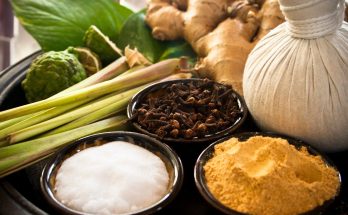Hyperuricemia, in which uric acid levels exceed the typical range of 2.5-7 mg/dL for men and 1.5-6 mg/dL for women, affects around 20% of the population. The necessity of learning how to lower uric acid levels has grown in recent years, as high levels can lead to painful illnesses such as kidney stones and gout.
When blood uric acid levels exceed 6.8 mg/dL, the toes and feet are particularly susceptible to the production of crystals in the joints. There are a variety of natural methods for controlling these levels, but some factors, such as obesity and some medications, might cause them to rise.
If you want to learn how to naturally lower your uric acid levels, this blog is for you. In this article, you will learn which foods can lower uric acid levels, why being hydrated is crucial, and how lifestyle changes such as drinking coffee or consuming extra vitamins can make a significant effect.
Let’s get started!
Understanding Uric Acid and Its Impact on Health
Uric acid is produced during breakdown of purines, which are naturally occurring substances found in the body as well as in foods such as meat, seafood, and alcohol. Normally, uric acid dissolves in the blood, passes through the kidneys, and is excreted in urine.
However, when your body either produces too much uric acid or falls to eliminate it properly, it can build up in the bloodstream. This excess can lead to the formation of uric acid crystals, which may accumulate in joints or kidneys, causing painful symptoms.
The effects of high uric acid include:
- Gout – A type of arthritis marked by sudden, severe joint pain, swelling, redness, and tenderness, often affecting the big toe. Gout attacks can be excruciating and may last days or weeks if not treated.
- Kidney stones – Hard deposits of uric acid in the kidneys, which can cause sharp pain in the back or side, blood in the urine, and nausea.
- Joint and Tissue Damage – Over time, persistent high uric acid levels can damage joints, tendons, and surrounding tissues.
- Other Complications – Increased risk of cardiovascular diseases, hypertension, and metabolic disorders.
Symptoms of High Uric Acid May Include:
- Intense joint pain, often in the toes, ankles, knees, or fingers
- Swelling, redness, and warmth in affected joints
- Fatigue or general weakness
- Difficulty moving affected joints during flare-ups
- Formation of kidney stones or lower back pain
By understanding these symptoms and causes, individuals can take proactive steps to manage uric acid naturally, reducing the risk of serious complications.
Natural Remedies and Lifestyle Adjustments
Managing uric acid levels doesn’t always require medication. Several home remedies, dietary choices, and lifestyle changes can help reduce uric acid naturally. Here’s a detailed look at effective strategies:
Stay Properly Hydrated
Water plays a crucial role in flushing out excess uric acid through urine. Staying hydrated helps prevent uric acid crystals from forming in joints or kidneys.
- Tip: Drink at least 8-10 glasses of water daily.
- Pro Tip: Adding lemon slices to water can enhance uric acid excretion and provide vitamin C benefits.
Limit High-Purine Foods
Purines are naturally present in many foods, and their breakdown produces uric acid. Reducing intake of high-purine foods can significantly decrease uric acid levels.
- Food to limit or avoid:
- Red meat (beef, lamb, pork)
- Organ meats (liver, kidney, heart)
- Certain seafood (sardines, mackerel, anchovies, shellfish)
- Alcohol, particularly beer and spirits
- Sugary drinks high in fructose
- Tip: Instead of completely eliminating protein, focus on low-purine alternatives like eggs, low-fat dairy, and plant-based proteins such as lentils and beans.
Eat Low-Purine, Uric Acid-Friendly Foods
Certain foods can help neutralize uric acid and reduce inflammation:
- Fruits: Cherries, blueberries, strawberries, oranges, and, pineapple
- Vegetables: Leafy greens, bell peppers, carrots, and cucumbers
- Whole grains: Brown rice, oats, and quinoa
- Dairy: Low-fat yogurt, milk, and cheese
- Tip: Cherries, in particular, have anti-inflammatory properties that may reduce the frequency and severity of gout attacks.
Incorporate Vitamin C
Vitamin C can enhance uric acid excretion via the kidneys. Including vitamin C-rich foods in your daily diet is a natural way to help manage uric acid levels.
- Sources: Oranges, kiwi, guava, bell peppers, and broccoli
- Tip: Avoid high-dose supplements without consulting a doctor, as excessive intake may cause other issues.
Apple Cider Vinegar (ACV)
Apple Cider Vinegar is a popular natural remedy believed to help break down uric acid.
- How to use: Mix 1-2 teaspoons of ACV in a glass of water and drink it daily.
- Tip: Start with small amounts and monitor how your body reacts, as ACV can be acidic for some individuals.
Baking Soda (Sodium Bicarbonate)
Baking soda may help neutralize uric acid in the body, but it should be used cautiously.
- How to use: Dissolve ½ teaspoon in a glass of water once daily.
- Caution: Avoid if you have high blood pressure, kidney issues, or are on a sodium-restricted diet.
Maintain a Healthy Weight and Regular Exercise
Excess body weight can contribute to high uric acid levels and increase the risk of gout. Regular exercise and a balanced diet help:
- Improve Metabolism
- Support kidney function
- Reduce uric acid production
- Tip: Moderate-intensity exercises like walking, swimming, and yoga are beneficial without putting too much stress on the joints.
Limit Alcohol and Sugary Drinks
Alcohol, especially beer and spirits, increases uric acid production and reduces its excretion. Sugary beverages containing high-fructose corn syrup also contribute to hyperuricemia.
- Tip: Replace sugary drinks with water, herbal teas, or infused water with lemon or cucumber.
Additional Foods That May Help Lower Uric Acid
- Cucumber: High water content and low purines help flush uric acid naturally.
- Green Tea: Packed with antioxidants that reduce inflammation and uric acid levels.
- Lemon Water: Citric acid in lemons may help dissolve uric acid crystals.
- Berries: Rich in antioxidants and vitamin C, berries reduce inflammation and protect joint health.
When to See a Doctor
While home remedies can help manage uric acid levels, it’s important to seek medical advice if you experience:
- Severe or sudden joint pain, swelling, or redness
- Frequent uric acid spikes despite home remedies
- Signs of kidney stones: intense back or side pain, blood in urine
- Chronic fatigue or persistent health issues
A healthcare professional can conduct blood tests, assess kidney function, and prescribe appropriate treatments if necessary.
Conclusion
Managing uric acid naturally involves a combination of dietary choices, hydration, lifestyle adjustments, and preventive measures. By incorporating these home remedies and habits into your daily routine, you can:
- Reduce the risk of gout attacks
- Prevent kidney stones
- Support overall joint and kidney health
- Improve energy levels and wellness
Consistency is key. While natural remedies can be highly effective, they work best when combined with medical guidance and regular monitoring of uric acid levels.



